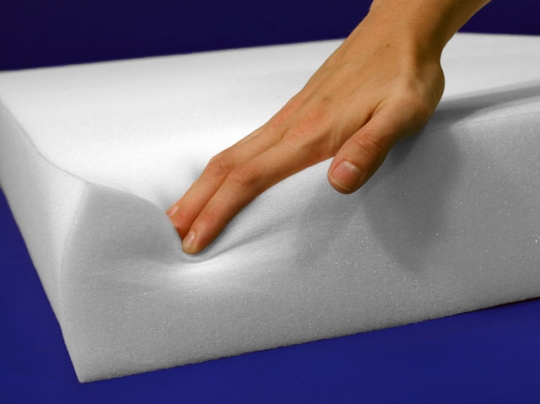When we apply an external force on a part, its length changes in the direction of the applied force and perpendicular to the applied external force. This change in length in the direction perpendicular to the applied force is due to the Poisson effect. In this article, we will discuss what Poisson’s ratio is? and how to calculate it?
What is Poisson's Ratio?
Mathematically Poisson’s Ratio is equal to the negative of the ratio of Lateral Strain and Longitudinal Strain within Elastic Limits.
It is a unitless quantity and denoted by the symbol “ν“. Its value remains constant within the elastic limit.
Poisson's Ratio Formula
When we apply a tensile force to a metal bar
- Its length increases in the direction of applied force.
- Width decrease in the direction perpendicular to the applied force.
We can represent this relationship between the change in length and width of the metal bar by Poisson’s ratio.

Mathematically Poisson’s Ratio is equal to the negative of the ratio of lateral strain and longitudinal strain.

A negative sign indicates compressive deformation because compression is considered -ve and tensile deformation +ve.
In the above case, either lateral or Longitudinal mechanical strain will be compressive.
Poisson Ratio Calculation Example
Problem:
Consider a steel bar of 100 mm length and 50 mm width. If after the application of 50-newton force, steel bar length increases to 102 mm. What will be the change in width?
Solution:
Let’s consider steel bar width is reduced by dW mm
Poisson Ratio for Steel = 0.3
Longitudinal Strain = (102-100) / 100 = 0.02
According to poisson ratio formula:
0.3 = (dW / 50) /0 .02
(dW / 50) = 0.3 x 0.02 = 0.006
dW = 0.3
Therefore we can conclude that. For the above example, the metal bar width will be reduced by 0.3 mm.
Poisson's Ratio Values For commonly used Materials
The value of the Poisson ratio for stable, isotropic materials should lie between -1.0 to 0.5 because it has a direct impact on the Young Modulus, Bulk Modulus, and Shear modulus value.
But for most of the materials Poisson Ratio value varies in the range of 0 to +0.5. It is a scalar and unitless quantity.
| Material | Poisson's Ratio (indicative Purpose Only) |
|---|---|
| Cork | 0 |
| Polystyrene Foam | 0.3 |
| Steel | 0.27-0.3 |
| Brass | 0.33 |
| Copper | 0.35 |
| Rubber | 0.499 |
Positive Poisson Ratio
When a material length increases in the direction of applied tensile force and reduces perpendicular to the applied force. This type of material behavior indicates a positive Poisson Ratio. Most engineering materials available in the market exhibit this behavior.
Negative Poisson Ratio
In material with a negative Poisson ratio, length increases in the direction perpendicular to the applied external force. The Negative Poisson ratio materials are called Auxetics.
They exhibit high energy absorption and resistance to fracture properties and have applications in packing material, medical knee pads, the footwear industry, etc.
Commonly Asked Questions on Poisson's Ratio
It determines the impact of stress in a direction perpendicular to the applied force. For example, Gas or liquid in a pipe exhibits hoop stresses inside the pipe.
Due to the Poisson ratio, these hoop stresses cause longitudinal stress in the pipe. That results in a change in pipe length as well. Therefore pipe designers need to consider this impact during pipe-joint design.
Yes, Cork has zero poisson’s Ratio.
The Poisson ratio of 0.5 indicates that the volume of the material will remain constant.
For compressive deformation.
Yes, the Poisson ratio is a property of a material. Its value is constant within the elastic limit of a material.
Yes without this, the forces acting in the direction perpendicular to the applied force can cause product failure.
To sum up, Engineers use Poisson’s ratio during material selection for an application. It is unitless quantity and constant within the elastic limit. The value of the Poisson ratio For perfectly isotropic material is equal to 0.25.


Add a Comment